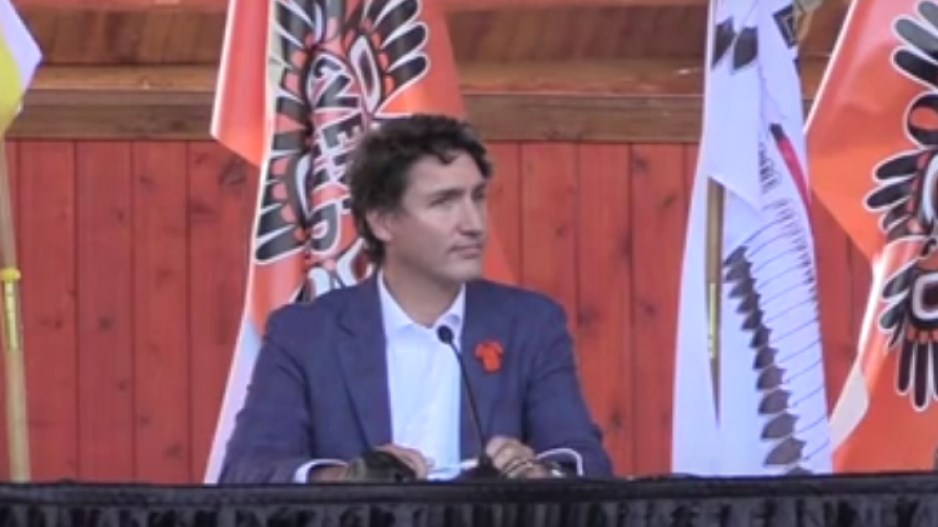“Kumbaya” time is over, according to the national chief of Canada’s Assembly of First Nations, who called on Prime Minister Justin Trudeau to take firm action on reconciliation.
Chief RoseAnne Archibald was among the First Nations dignitaries who met Monday with Trudeau during his visit to Tk’emlups te Secwepemc, and she said her message for him was clear.
“I wanted to reiterate to him that actions are what we need. We need to see actions,” Archibald said.
“The Canadian government, for the last 150 years or more, has spent billions of dollars trying to destroy our communities. They created these institutions of genocide, they have stolen our lands, they have taken resources without proper compensation — and that has to stop.
“I let the prime minister know that there is a healing path forward. I want him to walk that healing path with us.”
Archibald said the time for talk and platitudes is over.
“The healing path forward is not Kumbaya and ‘la la la’ and, ‘Let’s walk this path together,’” she said.
“It’s about reparations, it’s about action — and we expect that moving forward, and we’re going to work in a collaborative and co-operative way on that.”
Earlier in the day on Monday, Trudeau pledged “concrete action.”
Tk’emlups Chief Rosanne Casimir said she hopes those steps forward will include, for her band, funding for a healing centre, an elders’ lodge and a museum.
A healing centre would help those impacted by the residential school system access supports, and an elders’ lodge would allow aging band members to access care to make sure they can live dignified lives at home for as long as possible.
Casimir said a museum would allow the band to share its history with the community and remember its past.
“It’s about remembering who we are and where we came from,” she said.
“We can house artifacts and our museum in a place we can pass on from generation to generation.”




